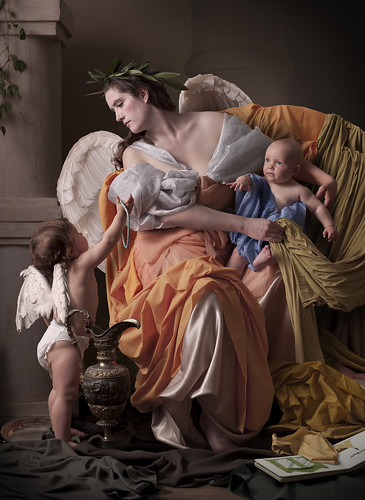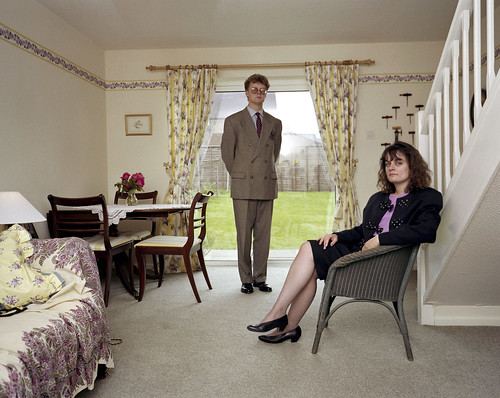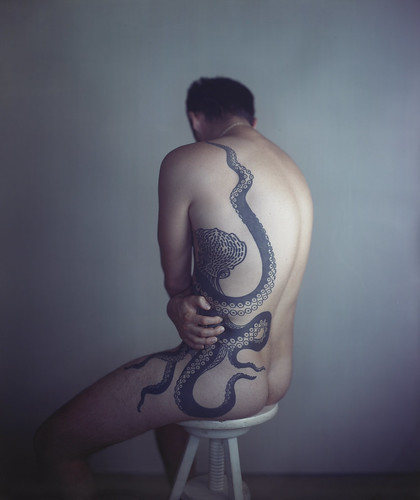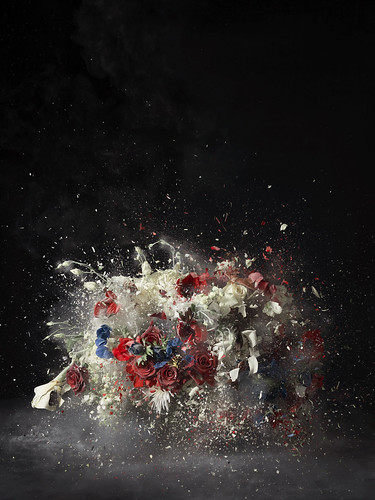Thursday, 9:24am
6 December 2012
Colliding art forms
The dark halls of the National Gallery’s Sainsbury Wing welcome an illuminating exhibition that bridges the gap between classical art and photography
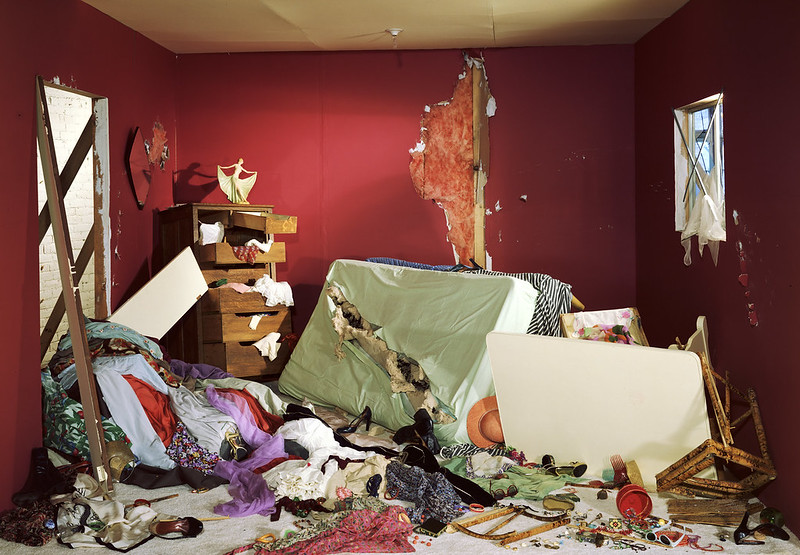
Tucked in the basement of the National Gallery, ‘Seduced by Art: Photography Past and Present’ examines photography’s history and relation to Old Master painting, writes Caitlin R. Giddens.
Visitors are welcomed into a series of dark rooms that compare contemporary pieces to early photographs and art-historical influences. With carefully chosen photos and paintings, the gap between historical art and contemporary photography is made to seem smaller.
Maisie Broadhead, Keep Them Sweet (2010) references digital photography’s influence from classic paintings.
Top: Jeff Wall, The Destroyed Room, 1978.
As this is the first major photography exhibition at the National Gallery, the show seems well overdue. Curated by Hope Kingsley, of the Wilson Centre for Photography, and Christopher Riopelle, curator of post-1800 paintings at the National Gallery, it is separated into genres – portraiture, nudes and figures, tableaux, landscape and still life.
Standout pieces come from contemporary photographers such as Martin Parr, Craigie Horsfield and Sam Taylor-Wood. In the first room, their photographs are juxtaposed with paintings by Constable, Degas and Ingres, and works by early photographers such as Julia Margaret Cameron and Gustave Le Gray.
Martin Parr, Signs of the Times, England 1991.
Portraiture has become a mainstay for photography, which has made portraits more accessible to wider society. As a result, the comparison of post-Renaissance and contemporary work in the portrait room might seem obvious compared to the revolutionary comparisons in other rooms. However, the early photographs seen here reach above their time. Portrait of a Woman, taken by an unknown photographer, appears more like an engraving than a photograph, capturing the aura and detail of its sitter. This room seems to ease visitors into the union of art and photography, whereas the other rooms convince any who doubt photography’s origins in classical painting.
Richard Learoyd, Man with Octopus Tattoo II, 2011.
The nude finds more common ground between art and photography, as the distinction between idealised nudity and realistic nudity is often blurred. In this room, contemporary photographs intermingle with Greek statues and work by Ingres, all artful and tasteful. Richard Learoyd’s piece, Man with Octopus Tattoo II (2011), poignantly mirrors James Anderson’s sculpture of Laocoön and his sons struggling with sea serpents (1855-65), hung side by side.
Thomas Gainsborough, Mr and Mrs Andrews (oil on canvas), about 1750.
In the still life room, enlightened comparisons are drawn to the earliest photographic themes. Most notably, Ori Gersht’s Blow Up: Untitled (2007) takes inspiration from Rosy Wealth of June (1886) by Ignace-Henri-Théodore Fantin-Latour – but Gersht’s flowers were frozen with liquid nitrogen and detonated with small explosive charges, captured by a high-speed camera. The resulting image raises the exhibition to a new level.
With its brilliant colours and captivating detail emanating from the dark walls, Blow Up can be seen from rooms away. The placement of the piece near the end of the exhibition suggests the curators recognise its power, and while overdue, it is no less explosive in fusing together art and photography.
Ori Gersht, Blow Up: Untitled 5, 2007.
‘Seduced by Art: Photography Past and Present’ is in the Sainsbury Wing of the National Gallery, Trafalgar Square, London WC2N 5DN (nationalgallery.org.uk), until 20 January 2013. It then travels to CaixaForum Barcelona (21 February – 19 May 2013) and CaixaForum Madrid (19 June – 15 September 2013).
Eye is the world’s most beautiful and collectable graphic design journal, published quarterly for professional designers, students and anyone interested in critical, informed writing about graphic design and visual culture. It is available from all good design bookshops and online at the Eye shop, where you can buy subscriptions, back issues and single copies of the latest issue. You can see what Eye 84 looks like at Eye before You Buy on Vimeo.

